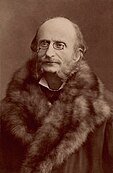| RedExplosives | |
|---|---|
| Info: | |
| Joined | January 5, 2016 |
![]() Costa Rica# My Python Code
Costa Rica# My Python Code
List of Contributions
- /info/en/?search=Sieve_of_Eratosthenes Add a block of python code
- /info/en/?search=Quantum_mechanics I change a typo, which was "led to its becoming the standard" to "led to it becoming the standard"
- /info/en/?search=Sigma Added an example of the summation operator
- User:RedExplosiveswiki/sandbox
My Python Code
Placeholder
print("This is just a placeholder.")
Remember
Remember is a place I put random stuff that I find interesting in case I forget about it or some thing I would like research more in depth later.
.
I'm working on memorizing 25 digits of π
The floor and ceiling functions give us the nearest integer up or down.
The floor and ceiling functions give us the nearest integer up or down.
21, 4, 0, and −2048 are integers, while 9.75, 5 1⁄2, and √2 are not.
ℕ or N means either { 0, 1, 2, 3, ...} or { 1, 2, 3, ...}.
he choice depends on the area of mathematics being studied; e.g. number theorists prefer the latter; analysts, set theorists and computer scientists prefer the former. To avoid confusion, always check an author's definition of N.
ℤ or ℤ means {..., −3, −2, −1, 0, 1, 2, 3, ...}.
ℤ+ or ℤ> means {1, 2, 3, ...} .
ℤ* or ℤ≥ means {0, 1, 2, 3, ...} .
x ≤ y means x is less than or equal to y.
x ≥ y means x is greater than or equal to y.
(The forms <= and >= are generally used in programming languages, where ease of typing and use of ASCII text is preferred.)
Featured Picture / Article Of The Day
Jacques Offenbach (1819–1880) was a German-born French composer, cellist and impresario. He is remembered for his nearly 100 operettas of the 1850s to the 1870s, and his uncompleted opera The Tales of Hoffmann. Beginning as a cellist and conductor, Offenbach first wrote small-scale one-act pieces, limited by theatrical licensing laws. These eased by 1858 when he premiered his first full-length operetta, Orphée aux enfers (Orpheus in the Underworld). La belle Hélène (1864) and other successes followed. The risqué humour (often about sexual intrigue) and gentle satire in these pieces, together with Offenbach's facility for melody, made them internationally known, and he was a powerful influence on later operetta and musical theatre composers. His best-known works were continually revived during the 20th century, and many of his operettas continue to be staged in the 21st century. The Tales of Hoffmann remains part of the standard opera repertory. ( Full article...)
| RedExplosives | |
|---|---|
| Info: | |
| Joined | January 5, 2016 |
![]() Costa Rica# My Python Code
Costa Rica# My Python Code
List of Contributions
- /info/en/?search=Sieve_of_Eratosthenes Add a block of python code
- /info/en/?search=Quantum_mechanics I change a typo, which was "led to its becoming the standard" to "led to it becoming the standard"
- /info/en/?search=Sigma Added an example of the summation operator
- User:RedExplosiveswiki/sandbox
My Python Code
Placeholder
print("This is just a placeholder.")
Remember
Remember is a place I put random stuff that I find interesting in case I forget about it or some thing I would like research more in depth later.
.
I'm working on memorizing 25 digits of π
The floor and ceiling functions give us the nearest integer up or down.
The floor and ceiling functions give us the nearest integer up or down.
21, 4, 0, and −2048 are integers, while 9.75, 5 1⁄2, and √2 are not.
ℕ or N means either { 0, 1, 2, 3, ...} or { 1, 2, 3, ...}.
he choice depends on the area of mathematics being studied; e.g. number theorists prefer the latter; analysts, set theorists and computer scientists prefer the former. To avoid confusion, always check an author's definition of N.
ℤ or ℤ means {..., −3, −2, −1, 0, 1, 2, 3, ...}.
ℤ+ or ℤ> means {1, 2, 3, ...} .
ℤ* or ℤ≥ means {0, 1, 2, 3, ...} .
x ≤ y means x is less than or equal to y.
x ≥ y means x is greater than or equal to y.
(The forms <= and >= are generally used in programming languages, where ease of typing and use of ASCII text is preferred.)
Featured Picture / Article Of The Day
Jacques Offenbach (1819–1880) was a German-born French composer, cellist and impresario. He is remembered for his nearly 100 operettas of the 1850s to the 1870s, and his uncompleted opera The Tales of Hoffmann. Beginning as a cellist and conductor, Offenbach first wrote small-scale one-act pieces, limited by theatrical licensing laws. These eased by 1858 when he premiered his first full-length operetta, Orphée aux enfers (Orpheus in the Underworld). La belle Hélène (1864) and other successes followed. The risqué humour (often about sexual intrigue) and gentle satire in these pieces, together with Offenbach's facility for melody, made them internationally known, and he was a powerful influence on later operetta and musical theatre composers. His best-known works were continually revived during the 20th century, and many of his operettas continue to be staged in the 21st century. The Tales of Hoffmann remains part of the standard opera repertory. ( Full article...)







